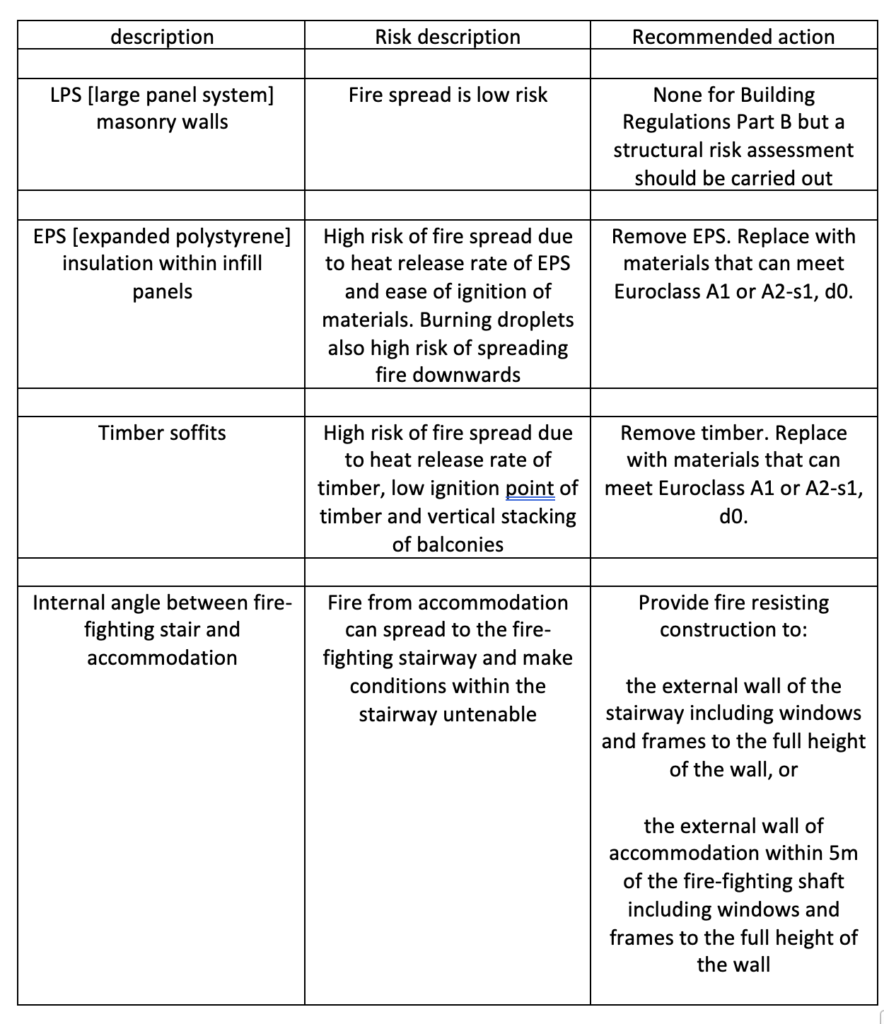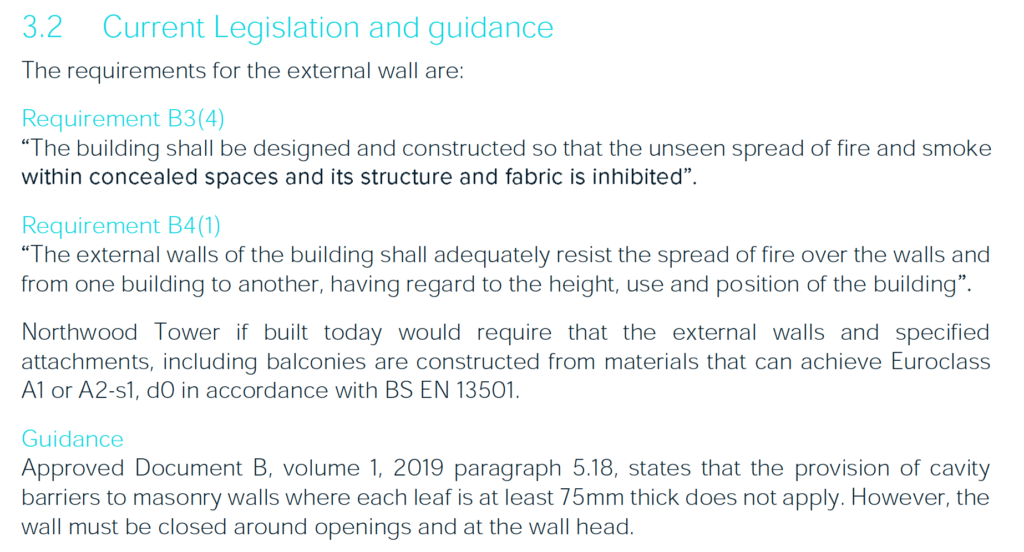New LBWF fire safety scandal: Northwood and St Georges Court towers have had high risk failings for years, and nothing has been done about them
LBWF is currently embarked on a £40m. programme of ‘building safety works’.
Much of this sum will be spent on its 14 tower blocks, all of which require substantial modifications, to the extent that for many months Waking Watch arrangements (where ‘suitably trained persons continually patrol all floors and the exterior perimeter of the building in order to detect a fire, raise the alarm, and carry out the role of evacuation management’) have been in place throughout, causing considerable public anxiety.
Earlier posts have judged this situation to be fairly disgraceful, but new evidence reveals that it is even worse than originally thought.
Much of the previous discussion was based on LBWF’s annual Fire Risk Assessments, which detail, tower by tower, the day-to-day dangers, and the measures necessary to minimise them, such as evacuation plans and firefighting equipment.
But in the past couple of years, LBWF has also engaged specialist structural engineers to delve beyond the surface issues, and focus on the way the towers are built, in particular how factors like ‘materials’ and ‘external wall construction’ impact on fire safety, and it is the resulting reports, just made public under the Freedom of Information Act, that up the ante.
Two examples demonstrate the tenor of the overall findings.
The investigation of 21 floor Northwood was carried out by GDS Chartered Surveyors Ltd. [hereafter GDS] and completed in September 2020.
Its key conclusion was that ‘The risk of fire spread over the stairway walls at Northwood Tower is high’, with a table on ‘Risks, recommendations, and actions for wall systems’ encapsulating the details thus:
As to 13 floor St Georges Court, the investigation there was carried out by BB7 Fire Ltd. [hereafter BB7], and also completed in September 2020.
It, too, assessed the risk of fire spread at the tower as ‘high’; once again cited the soffit concern; and added, first, that apartment windows facing towards the interior passageways had frames made of PVC ‘which are unlikely to be fire resistant to E30 [that is, give 30 minutes protection]’, and, second, that there were serious problems with the wall cavities:
‘Although XPS [extruded polystyrene] and EPS [expanded polystyrene] have high PHRR [peak heat release rate] they are provided [sic] in a masonry wall cavity. If oxygen and ignition from an internal source (apartment fire) was prevented from entering the cavity the risk of fire spread would be manageable. However, there are numerous flue vents that enter the cavity from accommodation which could allow ignition and oxygen into the cavity. The risk is that fire from accommodation enters the cavity and starts to combust the XPS and EPS beads. In addition, there may be a deflagration (explosion) risk from [the] pentane gas blowing agent used to manufacture polybeads’.
A list of recommended actions followed, with that arising from the presence of EPS and pentane being particularly chilling:
‘As a priority, carry out a DSEAR [Dangerous Substances and Explosive Atmospheres Regulations 2002] risk assessment on the EPS polybead installation to determine deflagration risk. If DSEAR says the risk is not low and in consideration that the construction is LPS [large panel system] then we recommend you obtain a structural engineer opinion on the risk of progressive collapse should there be a risk of deflagration within the masonry wall space’.
Self-evidently, these reports fully justify LBWF’s current programme of mitigation.
But they also suggest something a good deal less palatable – that LBWF both could and should have intervened to protect its residents many years previously.
First, it is worth underlining that the structural flaws now identified at Northwood and St Georges Court are nothing new, and probably have existed, untouched and unremarked upon, for decades.
True, Northwood was overclad with brickwork in 1991, ‘to strengthen the structure to prevent progressive collapse as has occurred at Ronan Point during a gas explosion’. But neither GDS nor BB7 note any other relevant modifications, so it’s possible that, for example, the EPS and soffit problems date right back to when the two buildings were first opened in the 1960s.
Then there is the question of how LBWF explains its recent actions, and whether this stands up to scrutiny.
In public discussion, LBWF emphasises that it has always been driven by the fire safety legislation, and presently is directly – and conscientiously – responding to changes that have been introduced post-Grenfell.
Thus, when officers briefed the Budget and Performance Scrutiny Committee in September 2021, they highlighted that ‘[the] external wall structures at 14 high-rise blocks no longer comply with current or proposed building regulations, although were compliant at the time of building’; while five months later, they told a meeting of Northwood residents, ‘After the Council conducted building safety reviews some materials, which previously met the requirements, now need to be updated’.
However, looking closely at the structural engineers’ reports tells a rather different story.
Both of the latter include the same statement about the legislative yardsticks that the investigators used to gauge safety, with the one for Northwood reading as follows:
Taking these paragraphs in order,
(a) Requirement B3(4) and B4(1) mirror those in Part B Schedule 1 to the Building Regulations 2010;
(b) Euroclass A1, A2-sl, d0 and the British Standards Institution BS EN13501 all existed, and had been harmonised, prior to 2010; and
(c) while the wording in Approved Document B, volume 1, 2019 paragraph 5.18 was new, the 2006 version of this document, for example, contained copious advice regarding cavity barriers.
Moreover, the known potential dangers of EPS and pentane had been widely discussed since at least the 1990s, and were the subject of very clear advice issued by interested parties, for example, the UK Health and Safety Executive in 1998, and the European Manufacturers of Expanded Polystyrene, a key trade association, in 2002.
To sum up, when in 2020 GDS and BB7 found that the risk of fire spread at the two towers was ‘high’, their conclusions were based on standards and legal requirements that had been in place since at least 2010.
Or, to put it the other way round, if GDS and BB7 had carried out their surveys at any time in the decade before they actually did so, the result most likely would have been virtually the same.
Thus, as far as Northwood, St. Georges Court, and the other towers is concerned, it seems that LBWF simply took its eye off the ball.
LBWF’s Leaders during these years, first (the late) Councillor Chris Robbins, and then Cllr. Clare Coghill, often claimed that they were fully committed to improving the lives of those who the former was apparently prone to describe as ‘our people’.
Yet, both remained alert to big property developers and their plans to transform Waltham Forest by attracting in young, well-educated and affluent families, and over time the latter objective came to colour much else, diverting attention from other policies and concerns.
In other words, providing housing for the better-off and overlooking fire safety in the tower blocks were to some extent two sides of the same coin.
Of course, today LBWF has, in one of its favourite expressions, ‘moved on’.
But though the current remedial work is welcome, it does not in any way make up for the previous period of prolonged inaction, nor the fact that the residents of the 14 tower blocks are still living with Waking Watch.
And when the story is looked at like this, in its entirety from beginning to end, it is a scandal.


